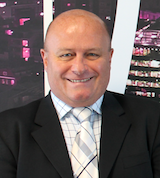 Congrats to M12 Solutions MD Andrew Skipsey who completed the nine day 960 mile Deloitte Ride across Britain from Lands End to John O'Groats.
Congrats to M12 Solutions MD Andrew Skipsey who completed the nine day 960 mile Deloitte Ride across Britain from Lands End to John O'Groats.
He said: "The whole experience was tremendous. Even though I was on the road for sometimes over 8 hours each day, the Threshold Sports organisation ensured we had fantastic food, were well cared for and our bikes were mechanically sound.
"We saw some wonderful countryside and travelled along every kind of road surface.
"Scotland was stunning with the most memorable stint being the exhilarating ride down through Glen Coe with the wind behind us, light traffic and wonderful weather.
"No such trip would be complete without some horizontal rain, headwinds and strong cross winds which we had, however the weather was mainly kind and other road users were generally considerate.
"I always wanted to do this trip and when I found out that it could be done in such a well organised fashion, I joined. Now in its 5th year, this is the flagship fundraising event for The British Paralympic Association. I am raising money for The Royal Marines Charitable Trust Fund and Home-Start North Dorset."

 The man at the centre of True Telecom's reinvigorated channel building campaign brings 35 years sales experience in the telecoms sector including senior management positions at BT Wholesale and BT Global Services where he was responsible for securing, managing and growing channel partners.
The man at the centre of True Telecom's reinvigorated channel building campaign brings 35 years sales experience in the telecoms sector including senior management positions at BT Wholesale and BT Global Services where he was responsible for securing, managing and growing channel partners.